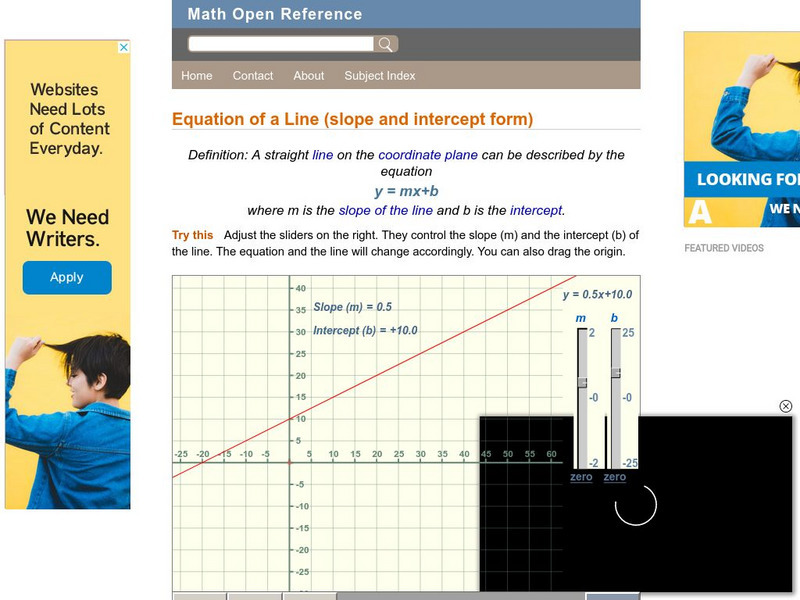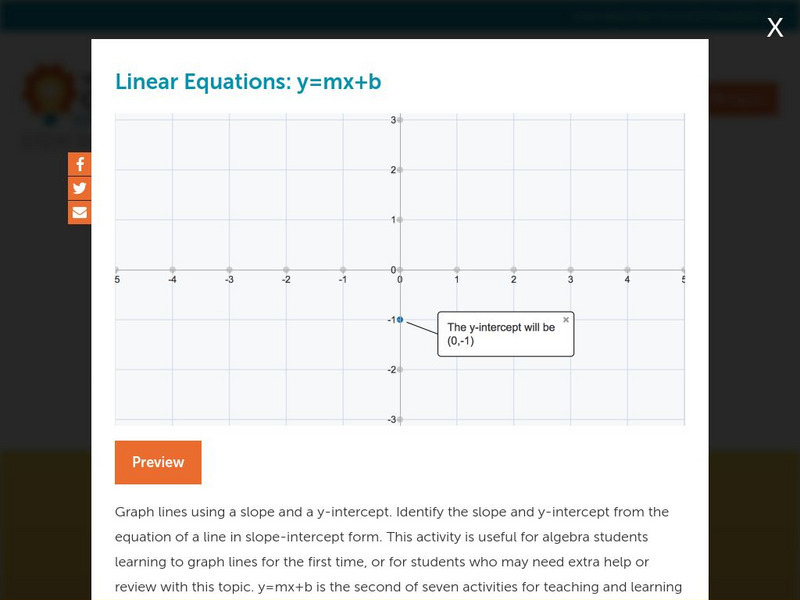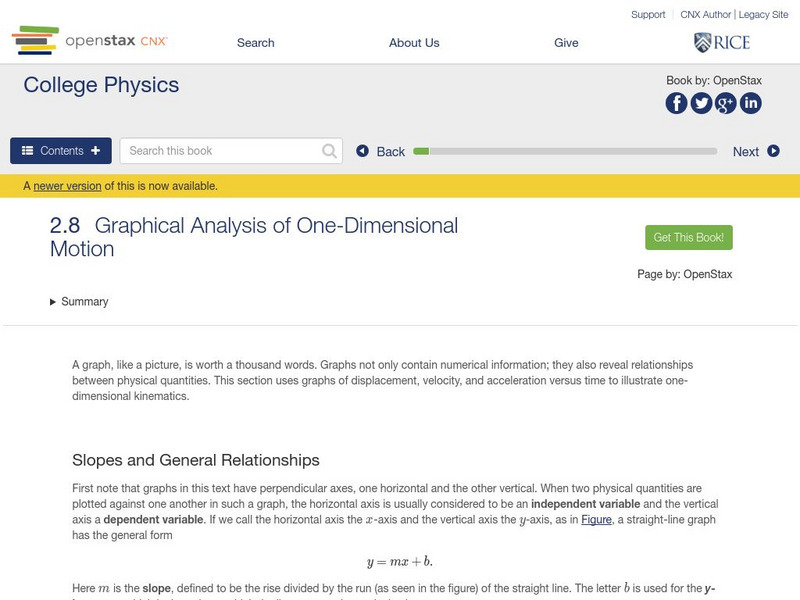Texas Education Agency
Texas Gateway: Determining Intercepts and Zeros of Linear Functions
Given algebraic, tabular, or graphical representations of linear functions, the student will determine the intercepts of the graphs and the zeros of the function.
Concord Consortium
Concord Consortium: Linear Equations: Points, Intercepts, and Slopes, Oh My!
Learn how to graph lines with two methods: using x- and y-intercepts and using point-slope form.
Math Open Reference
Math Open Reference: Equations of a Line (Slope and Intercept Form)
The interactive resource investigates slope and intercept. Students adjust the sliders to control the slope (m) and the intercept (b) of the line. The equation and the line will change accordingly. Learners can also drag the origin.
Concord Consortium
Concord Consortium: Linear Equations: Y=mx+b
Graph lines using a slope and a y-intercept. Identify the slope and y-intercept from the equation of a line in slope-intercept form.
Stefan Warner and Steven R. Costenoble
Finite Mathematics & Applied Calculus: Linear Functions and Models: Basics: Slope and Intercept
A mathematics tutorial that allows you to interactively learn and manipulate the slope and intercepts of a line.
Other
University of Wisconsin: Finding the Slopes of Lines
This is an interactive page that provides the user with practice for finding the slope of a line. The site has a list of seven questions and requires the user to change the graph to fit the given required slope.
OpenStax
Open Stax: Graphical Analysis of One Dimensional Motion
In the following interactive module students will describe a straight-line graph in terms of its slope and y-intercept. They will determine average velocity or instantaneous velocity from a graph of position vs. time.






